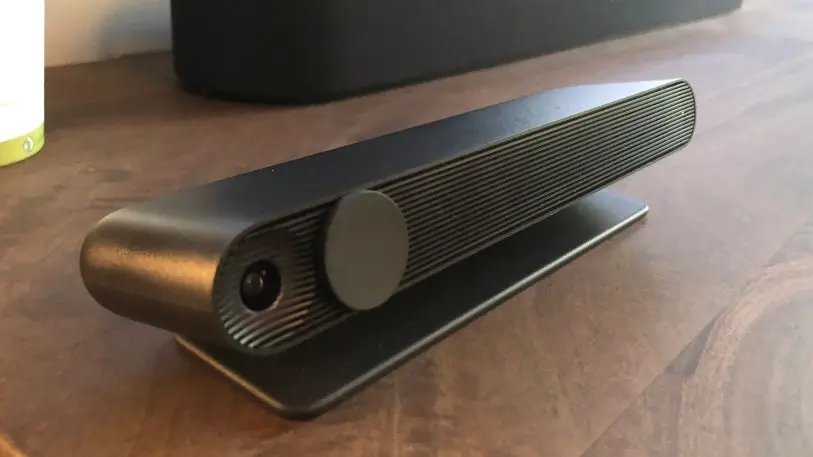Facebook’s new Portal TV is a squat black camera device that perches on top of your TV and lets you do video calls on the big screen in the living room. It also lets you watch TV together with your Facebook Messenger contacts.
Facebook sees the device as a video-calling device first, with the TV streaming and “Watch Together” experience as a feature that distinguishes it from other home cameras (like Amazon’s Echo Show, for example).
To make it work, you first place a video call to one of your Facebook Messenger contacts (who also has a Portal TV on their set), and once the call connects you, use the Portal TV’s small remote control to select the video icon from a menu at the bottom of the TV screen. You (or the friend you’ve called) can then select the show you want to watch from the Facebook Watch TV menu displayed on the TV.
As you watch the video, your friend shows up in a square in a corner of the screen. The Portal TV uses some clever technology to sync up the video for both parties and also to make sure everybody can talk along with the video and be heard.

Unlike the original Portal, you can now make video calls between between the device and smartphones using either Messenger or WhatsApp (also owned by Facebook).
You can initiate video calls using Portal’s voice assistant by saying “Hey Portal.” Portal TV also now supports the Alexa assistant, which can be used to get news, play music, control smart home devices, or call up Alexa skills.
The Portal TV device itself keeps a low profile on top of the TV–it’s just more than an inch tall and about 7.5 inches long. It mounts to the top of the TV using a clip, which also doubles as a stand for the tabletop. On the side is a button to completely disable the camera and the eight-microphone array. There’s a physical slider on the front that covers up the camera when you don’t need it.
Other than the Watch Together feature, the people on a Messenger video call can also read stories or play games.
Portal TV has the same Story Time feature as the original Portal has. The feature superimposes funny masks over the face of person reading one of a menu of animated kids’ stories. A parent or a grandparent might use this to read kids or grandkids a story from far away.
You can choose from a number of interactive games, which also superimpose graphics over the faces of the players. One of these simple games puts rabbit masks over the players’ faces, and they move their mouths and bodies to grab donuts that fly up on the screen.
The company also announced a couple of new versions of the original Portal, a 10-inch screen Portal and an 8-inch screen Portal Mini device. Facebook says it designed both devices to look like picture frames so they would blend in. “We wanted this device to fit into every home easily,” said Facebook VP Andrew Bosworth during a press briefing Tuesday. The devices work in either landscape or portrait mode.
The best thing about the original Portal is its camera’s computer vision technology, which automatically (and expertly) pans and zooms to capture the people in the room. To the people watching from another place, it looks like a pro cameraman is framing the shots. The Portal TV and the new Portals use that same technology.
The Portal TV will sell for $149 starting November 5. The Mini will sell for $129 and the 10-inch Portal for $179, starting October 15.
Recognize your brand’s excellence by applying to this year’s Brands That Matter Awards before the early-rate deadline, May 3.
